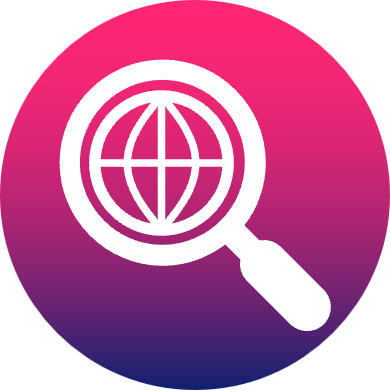Skill roadmapping
For the skills of today and tomorrow
Identify today's and tomorrow's skills and develop a strategy to bring them in-house with our skill roadmap

How does this topic impact your productivity?
Why it is so important to manage your companies' skills proactively
An OECD study from 2021 indicates that the gap between high-productivity firms and those with "ordinary" productivity is widening slightly every year. This study shows that skills are by far the most important lever for productivity.
With our skill roadmap solution, you can work at an individual & manager level as well as at HR & organisational level:
Individual & manager
- We map the skills you need to be operationally and strategically successful. We do this very simply and efficiently, function by function, thanks to AI.
- We map the skills of your current employees with these skills of the future.
- Thanks to this process, you get a skill-match per person with the ideal skill profile of their job: you get a very concrete stepping stone to a personal development plan. This is the end of personal development plans that are insufficiently concrete and future-oriented ...
- You can also do the skill-match with other jobs the person might be interested in: this way, you can also organise internal mobility proactively.
HR & organisational level
Since you map the skill-match at person level, you can also aggregate it: this gives you a perfect picture of the skill groups that contain the biggest matches and the biggest gaps. You map very easily and objectively:
- on which to focus your training policy and efforts: your training policy will no longer be a matter of mere 'feeling’ but will be directly linked to an objective skill-gap.
- on which to focus your recruitment policy: you will identify which skill-gaps are difficult to bridge, even with your training policy. You can then target and proactively search the labour market for candidates with the potential for those skills.
Our step by step solution
What is our solution?
In five steps we translate the organisational strategy into a number of critical skills needed to successfully implement said strategy.
Step 1: Determining the most appropriate approach
In a skill roadmap, you build a qualitative strategic workforce planning: you start from the strategic challenges and translate them into the necessary skills.
- Some companies want to start with their leadership level first: which leadership skills do we really need to be successful?
- Other companies start with a key department or business unit (e.g. IT or a commercial business unit).
- Still other companies start from a number of critical reference functions: functions with high operational and/or strategic impact and/or high turnover risk (where it is not easy to replace these people and the impact on the business is high). They use these reference functions as a basis for mapping and developing the potential in the organisation towards these critical functions.
Step 2: Translating the strategy and the commercial and operational challenges into skills
In this step we determine (adapted to the chosen focus), through a strategic dialogue with the top leadership team and key business units, what are the most critical skills at different levels: on which skills will success depend?
From strategy (what do we want to achieve) to concrete actions (how are we going to achieve it): this part of the dialogue is about "if we want to achieve X, we have to do Y."
From concrete actions to skills: what skills/knowledge do we need to do this successfully?
- We do this initially through a spontaneous dialogue with your top leadership people, without pushing them into a 'harness' of skills. We help them with your skills catalogue (if it exists) and our skill quiz.
- We then map the outcome of this dialogue with talentguide©: we use this AI-driven tool to perform a matching with the international European skills taxonomy and the skills used by many other companies.
- Based on the output of the strategic dialogue and current job descriptions, we build, through AI, a future-oriented skill profile per role/function.
- Through workshops, we fully customise those skill profiles for your company.
Step 3: Creation of the skill profiles of the employees
In the next step, we load employee information into talentguide©. This includes CVs, LinkedIn info, assessments, HR info, etc.
- This is how we obtain a skill profile per employee that can easily be matched with the skill profiles of the jobs.
- Each manager can further adjust this profile together with the individual employee.
Step 4: The dialogue on personal development between employee and manager is concretely supported
Many organisations have been grappling for years with how to become a 'learning organisation' and how to use 'personal development plans' effectively. We all know how crucial employee development is, but it doesn't really get off to a flying start. Many employees do not have a (real) development plan, or it is very functionally focused on doing the job as it is, or it is difficult to know whether development plans (and thus investments) are in line with the strategy ...
The individual skill-match solves this:
- It is a very solid basis for a very concrete and focused skill development plan per person. With this, we do away with "fluffy and random" PDPs.
- For the manager, this also removes the 'white sheet' syndrome ('how do I get started?'): after all, the skill-match and the skill-gaps are indicated concretely per employee. The manager can easily, concretely and constructively focus the skill development plan on bridging the existing gaps. That is much easier than the abstract question 'build a personal development plan'.
- This way, the skill development plan is directly linked to the strategy and skills we will need in the future. The investments we make in training and development are therefore automatically much better spent.
Step 5: HR can build a much more targeted & effective policy at organisational level
HR can additionally use the aggregated data to build its Build, Bind, Buy, Bounce strategy:
- Build: for which skill groups do you have the most important gaps?
Based on this information, you can develop a focused training and development policy. - Bind: which people have (the potential of) critical skills towards the future?
This is how you build a targeted retention policy. - Buy: for which skills do you have important gaps that you cannot solve via internal training and other solutions? For these skills you will search the labour market in a targeted and proactive way.
- Bounce: are there also people who have too big a skill-gap and are in danger of not being able to keep up? With this information, you can anticipate and look for good, social solutions.
Client case
What we have achieved for our customer
Company X has developed a new strategy for its IT department. It wants to invite its IT staff to evolve and develop themselves in line with these future ambitions.
- Together with management, we translated the strategy into the skills needed to develop it successfully. We call these the 'general IT skills'.
- The company already had an idea of the IT functions of the future but had no new job descriptions yet.
- Through talentguide©'s AI engine and based on a market scan for similar functions, we identified both the specific and general tasks and skills of these future functions. Together with management, we refined this.
- Thus, the new and forward-looking functions, both in terms of tasks and skill profile, were easily determined.
- In the next step, employees' CVs and work experiences are uploaded into talentguide©. This way, we easily map out a training path and priorities for each IT employee.
Our deliverables
What can you expect from us?
The points below summarise what you can expect from Sphere-Work when you engage us to translate organisational strategy into the critical skills you need to achieve your strategy:
- Workshop with top leadership team to determine critical leadership skills;
- Leadership profiles with corresponding skills;
- Skill profiles of the critical reference functions;
- Workshop(s) to fine-tune the skill profiles of the critical reference functions;
- Skill profiles of the other functions;
- Skill profiles of all employees.
Ready to tackle
your productivity?
We are always open to an informal conversation.
Bert Van Rompaey
Functietitel
Bert heef 20 jaar ervaring op het gebied van HR en verandertrajecten, waarvan 14 jaar als lid van Executive Committees in grote organisaties, voornamelijk in de bank- en luchtvaartsector. Bert werkte met en in verschillende culturen (Belgisch, Nederlands, Frans, Duits) en was succesvol in het realiseren van diepgaande & pragmatische veranderingen in die verschillende omgevingen. Het laatste jaar werkte hij voor kleinere bedrijven (bv. de fusie van 4 organisaties met in totaal 150 FTE's, strategie-implementatieproject in een IT-bedrijf van ~1000 FTE's, ...).
Focus: Strategische HR, reorganisaties & herstructureringen, fusies & overnames, sociale relaties, reward, strategische scenarioplanning, prestatiecultuur, personeelskosten & HR-gegevens.

Come work for Sphere-Work!
We currently have a vacancy for a Sales and Account Manager. You can find more information on LinkedIn.
Click here to go to our Sales and Account Manager vacancy.
We look forward to discovering more about you. After receiving your details via the form below, we will contact you as soon as possible to discuss next steps.
Come work for Sphere-Work!
Thank you for contacting us.
We appreciate you taking the time to contact us. Your message has been well received. We will get back to you as soon as possible.

